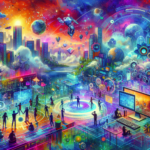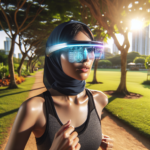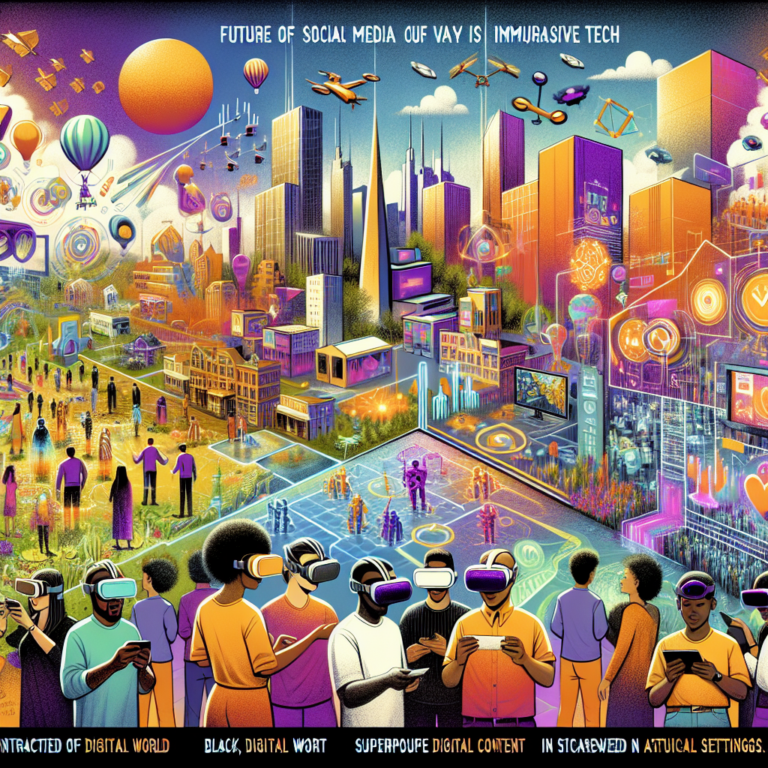The Future of Social Media: How Immersive Technologies are Redefining Digital Connection
The Era of Immersive Experiences
As technology rapidly evolves, immersive technologies are taking center stage, reshaping the landscape of social media in unprecedented ways. Virtual reality (VR), augmented reality (AR), and mixed reality (MR) are pioneering new methods for users to connect, engage, and share their experiences online. This burgeoning trend is not merely a gimmick; it is a significant transformation that promises to enhance user interactions and redefine the essence of social networking.
Exploring Key Immersive Technologies
1. Virtual Reality: A New Dimension of Interaction 🌐
Virtual reality creates an entirely simulated environment, allowing users to step into a digital realm. Imagine participating in a virtual concert or exploring a digital gallery with friends from around the globe. VR enables:
- Enhanced User Engagement: Users are fully immersed, making interactions feel more real and spontaneous.
- Global Communities: Geographical barriers disappear, paving the way for diverse interactions with fellow enthusiasts.
- New Content Creation: Users are now empowered to create and share content in 3D, adding layers of creativity.
2. Augmented Reality: Blending Digital with Reality ⚡
Augmented reality adds digital elements to the real world, seamlessly merging them for the user to experience. From filters on platforms like Instagram to virtual try-ons on shopping sites, AR opens doors to:
- Interactive Storytelling: Brands can captivate users by telling stories that merge life with digital elements.
- Instant Gratification: Users can visualize products in their environment, easing the decision-making process.
- Enhanced Live Events: Enhancements to physical events can create memorable experiences, from live-tweeting with AR visuals to interactive attendees.
3. Mixed Reality: The Best of Both Worlds 🔗
Mixed reality combines the physical and digital worlds, leading to hybrid experiences where users can interact with both realms. This technology contributes to:
- Collaborative Ventures: Teams can interact through mixed reality platforms, expanding how businesses communicate and operate.
- Networking and Collaboration: Social media platforms may evolve into collaborative spaces where users work together on creative projects in real-time.
Transforming Social Media Interactions
Creating Engaging Content
With the adoption of immersive technologies, the type of content shared on social media platforms is shifting. Users are favoring content that offers high engagement levels and emotional resonance. Here are some content strategies that will thrive in this new landscape:
- VR Live Streaming: Users can create VR-streaming experiences, allowing friends and followers to join their adventures as if they were there.
- AR Filters and Effects: Influencers can develop unique AR filters for followers to use, increasing brand loyalty and engagement.
- 3D Modeling: Businesses may harness 3D modeling tools to showcase products engagingly, giving a full sensory experience.
Enhancing User Interactions
The interaction between users is also being revolutionized through immersive technologies. These changes lead to:
- Immersive Storytelling: Brands can craft narratives using VR or AR that users can explore.
- Dynamic Community Engagement: Users can hold discussions in virtual spaces, enhancing the sense of belonging.
The Business Perspective: Opportunities in the Immersive Landscape
For businesses, integrating immersive technologies into their social media strategies will not just keep them relevant—it could lead to considerable competitive advantages. Here are some ways companies can capitalize on this trend:
- New Advertising Formats: Advertisers may explore interactive ads that use AR and VR to draw in consumers.
- Social Commerce: Virtual showrooms or stores can allow consumers to experience products before purchasing.
- Data Analysis: Brands can analyze user interactions in immersive environments, gaining insight into consumer behavior.
Challenges and Considerations
While the future looks bright, there are challenges to consider when adopting immersive technologies in social media:
- Access to Technology: Not all users have access to VR or AR devices, leading to potential exclusivity.
- Content Creation Challenges: Crafting engaging immersive content requires significant resources and expertise.
- User Experience Complexity: Keeping user experience simple while ensuring immersive engagement can be tricky.
The Road Ahead: Evolution of Engagement
As immersive technologies continue to evolve, social media will undoubtedly look different in the years to come. Expect to see:
- More Personalized Experiences: Enhanced data analysis will lead to tailored content for users.
- Innovative User-Generated Content: Users will have tools at their disposal to create and share personal experiences in innovative ways.
- Shifting Social Dynamics: Connections will go beyond digital interactions; users may want to meet in virtual spaces.
As we venture into this new realm, it’s safe to say that immersive technologies will play a crucial role in redefining how we interact on social media, creating exciting opportunities for engagement, creativity, and community like never before! 🌟




0 Comments